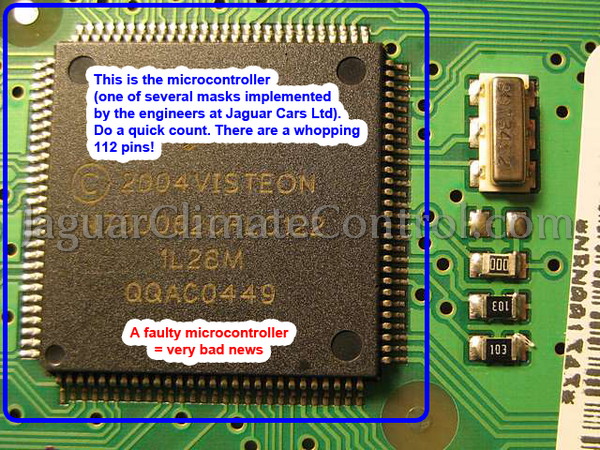18
Not all climate control modules are repairable – what? gasp!
 News
News No tags
No tags
“Not all climate control modules are repairable” – is a headline that nobody wants to hear. This includes us, our customers, and even our competitors. But this is truth: not all units are repairable.
Here’s a true story:
We had a customer (let’s call him “John”), who first sent his climate control module (CCM) to another repair house (let’s call them “XYZ Re-manufacturing”). John sent the unit to XYZ, had it repaired, then got the unit back and re-installed the unit (this marked round 1). It turned out great. John got his cold a/c back, and XYZ added John to their satisfied customer list. Months went by without a hitch. Then, all of a sudden, John realized that his a/c had started to blow hot air only. He brought his car back to his trusted mechanic, who performed all the proper diagnostics. They found that the dual climate control valve (DCCV) was functioning correctly. There was also continuity between the DCCV and CCM, so they determined that the CCM was malfunctioning. John sent the CCM back to XYZ for a re-check. XYZ dug deeper, re-worked their repair a bit differently, and sent the unit back to John (this marked round 2). Once again, John got his cold a/c back. Yet, only weeks went by before the hot air returned. So John and the mechanic sent the unit back to XYZ for another go. After this round (this marked round 3), the same thing happened: Hot air after a few weeks. XYZ decided that there was nothing more they could do, and refunded John’s money.
Not wanting to give up, John decided to send his CCM to us for a second opinion. We performed a complete inspection, and found that XYZ had done an OK job at the repair. Not quite as robust as ours, and missing the fault-protection upgrade (a JaguarClimateControl.com exclusive), but still workable. We saw no visible or obvious reason why the unit should not work. In fact, the unit functioned properly during our bench test in the lab. With John’s approval, we removed XYZ’s repair, and implemented our repair with fault-protection. Bench testing thereafter showed no faults. We packed and shipped the unit back to John (round 4, anyone?). His mechanic re-installed it and things ended up pretty much the same: a/c blew cold air at first, then got stuck on hot air only. Once we were notified of the continuing problem, we rebuilt a spare unit and sent it out to John. That took care of the problem for good.
We chalked it up to a faulty microcontroller (the biggest chip on the board, a.k.a. “the brains”) in John’s original CCM. What made things worse was the intermittent nature of the problem. A computer chip “gone haywire” can not only cause very unpredictable symptoms, but can also make diagnosis very difficult. Due to the chip’s propriety internal design, there was simply no repair possible. The only thing that could be done was replace the entire climate control board.

When are CCMs non-repairable?
We have seen climate control units in all kinds of conditions. Burn damage, water damage, impact damage, etc…we’ve seen it all (OK, maybe not “all” – but still quite a lot). In most cases, we can repair the unit. In some cases, a unit is beyond repair due to excessive physical damage, or due to a faulty microcontroller.
What happens if I get stuck with a non-repairable CCM?
We know that feeling. In fact, we have built up quite a collection of non-repairable CCMs for ourselves. We stock a good number of repairable non-navigation CCMs. So, if you have a non-nav CCM and you are stuck in this situation, then we can most likely work something out with you.
On the other hand, if you have a nav-equipped RCCM, then it gets tougher. Faulty microcontrollers have killed off a lot all of our RCCM inventory. This means that if a standard repair doesn’t do the trick, you may ultimately need to purchase a new RCCM from the dealership. This doesn’t happen very often, but it does happen (we estimate roughly 15-20% of RCCMs show evidence of faulty microcontroller behavior).
When we receive a customer’s unit that exhibits no signs of burn damage, it immediately raises a red flag. Beyond that, we have improved our in-lab bench-testing routine to help us detect this particular microcontroller fault. If we can confirm presence of microcontroller fault, we will notify you and perhaps discuss what other options still remain.
« If you’re gonna open up your Climate Control Module, who’s gonna stop you? We might as well show you the right way to do it! | I’m stuck with no heat during the winter time. What’s going on? »

